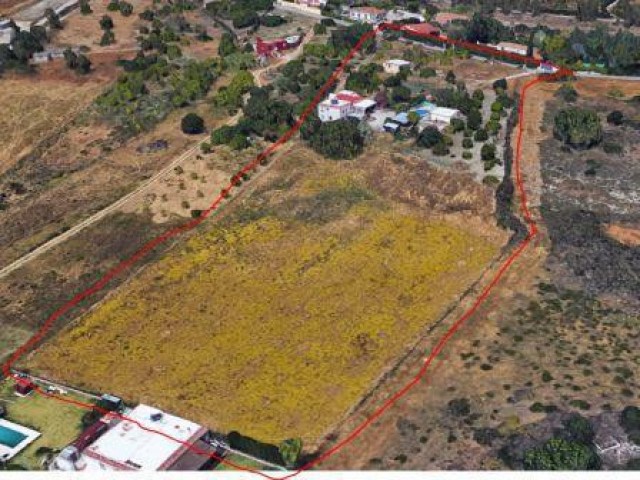Demystifying Spanish Property Inheritance Tax: Your Must-Know Guide
Navigating the labyrinth of Spanish Property Inheritance Tax doesn't have to be akin to solving a complex puzzle. In this comprehensive guide, we unravel the intricacies of Spanish property inheritance tax, equipping you with the knowledge to make informed decisions. Whether you're an heir, executor, or simply planning your estate, understanding the nuances of inheritance tax in Spain is paramount. In this must-read guide, we demystify the often perplexing aspects of this tax, shedding light on its implications for property owners. Our journey will take you through the essentials, debunk misconceptions, and provide invaluable insights into managing this aspect of your estate. With comprehensive coverage and expert analysis, this guide ensures that you are well-prepared to navigate the complex terrain of Spanish property inheritance tax. Stay tuned as we decode this crucial subject, empowering you with the knowledge you need to handle inheritance tax matters with confidence and clarity.
Understanding Spanish Property Inheritance Tax
Spanish property inheritance tax, known locally as "Impuesto sobre Sucesiones y Donaciones," is a tax levied on the inheritance or gift of property in Spain. It is essential to comprehend the fundamental principles that govern this tax to navigate its complexities successfully.
In Spain, inheritance tax is a regional matter, with each autonomous community having its own regulations and rates. This decentralization leads to variations in tax burdens depending on the specific region where the property is located or the deceased had their fiscal residence.
The taxable base is determined by the value of the inherited property, and the relationship between the deceased and the heir influences the applicable tax rates. Understanding these basic principles is the foundation for unraveling the intricacies of Spanish property inheritance tax.
Factors Influencing Spanish Property Inheritance Tax
Several factors come into play when calculating Spanish property inheritance tax. The relationship between the deceased and the heir is a primary determinant. In general, close family members such as spouses and children enjoy more favorable tax rates and exemptions compared to more distant relatives or non-relatives.
The value and type of inherited property also impact the tax liability. Different regions in Spain might have varying tax brackets and allowances, so it is crucial to be aware of the specific regulations in the relevant autonomous community. Additionally, the financial situation of the heir, including existing debts and assets, can influence the tax burden.
Understanding these factors is crucial for accurate tax planning and ensuring that the inheritance process proceeds smoothly.
Spanish Property Inheritance Tax Exemptions and Deductions
While Spanish property inheritance tax is a reality, there are exemptions and deductions that can significantly reduce the tax burden for heirs. These exemptions often apply to the main residence of the deceased, provided certain conditions are met. For instance, many regions grant substantial reductions or full exemptions on the inherited family home when it serves as the heir's primary residence.
Other common exemptions include life insurance policies, family businesses, and assets designated for cultural or historical preservation. Additionally, certain regions provide deductions for disabilities or large families.
Navigating the intricacies of these exemptions and deductions requires careful consideration of the specific circumstances surrounding the inheritance. Utilizing these benefits effectively can result in substantial tax savings for the heirs.
Navigating the Process of Inheritance Tax in Spain
The process of dealing with Spanish property inheritance tax involves several steps, and understanding the legal requirements is crucial to avoiding complications. Generally, the first step is to determine the taxable base by assessing the value of the inherited property. Appraisals and valuations may be required to establish accurate values.
Once the taxable base is determined, the next step is to apply the relevant tax rates and exemptions based on the heir's relationship with the deceased and the nature of the inherited assets. The tax declaration must be submitted to the appropriate regional tax office within a specified timeframe.
Timely and accurate submission of the necessary documentation is vital to prevent delays and potential penalties. Working with professionals familiar with the local regulations and procedures can streamline the process and ensure compliance.
Seeking Professional Advice for Spanish Property Inheritance Tax
Given the complexities and regional variations in Spanish property inheritance tax, seeking professional advice is highly recommended. Tax advisors, legal experts, and notaries with expertise in Spanish inheritance law can provide invaluable assistance in navigating the intricacies of the process.
Professionals can help heirs understand their specific tax obligations, identify applicable exemptions, and ensure compliance with regional regulations. Their guidance can also facilitate the efficient and timely completion of the necessary paperwork, minimizing the stress and potential pitfalls associated with inheritance tax matters.
Common Misconceptions About Spanish Property Inheritance Tax
Misconceptions surrounding Spanish property inheritance tax abound, contributing to unnecessary anxiety and confusion among heirs. One common misconception is that all heirs face exorbitant tax bills, overlooking the fact that close family members often benefit from significant exemptions and reduced rates.
Another misconception is that the entire inherited estate is subject to taxation. In reality, various regions provide exemptions for specific assets, such as the main residence or family businesses, which can substantially lower the overall tax liability.
Understanding and dispelling these misconceptions is essential for heirs to approach the inheritance process with clarity and confidence.
Case Studies: Spanish Property Inheritance Tax Scenarios
To illustrate the practical application of the principles discussed, let's explore a few hypothetical case studies. These scenarios will highlight how different factors, such as the relationship between the deceased and the heir, the value and type of inherited property, and regional regulations, can influence the overall tax burden.
The Family Home Exemption: Maria inherits her parents' primary residence in Andalusia, where a significant exemption applies to the main residence. As the property serves as Maria's primary residence, she benefits from a substantial reduction in the taxable base, resulting in a lower inheritance tax bill.
Business Succession: Antonio inherits his father's family business in Catalonia. The region provides specific exemptions and deductions for family businesses, reducing the overall tax liability. Understanding these regional nuances is crucial for Antonio to maximize the available benefits.
These case studies underscore the importance of considering the specific circumstances of each inheritance to optimize tax outcomes.
Resources for Additional Information on Spanish Property Inheritance Tax
Staying informed about Spanish property inheritance tax is an ongoing process, especially considering potential changes in regional regulations. Here are some resources to help you stay updated and make informed decisions:
Regional Tax Offices: Local tax offices in each autonomous community provide information on regional regulations and can clarify specific queries related to inheritance tax.
Legal and Tax Advisors: Seeking guidance from professionals with expertise in Spanish inheritance law and taxation is a reliable way to navigate the complexities of the system.
Official Government Websites: The official websites of Spanish government agencies and tax authorities offer comprehensive information on inheritance tax regulations and procedures.
Seminars and Workshops: Attend workshops or seminars conducted by legal and tax professionals to stay abreast of changes in legislation and gain insights into effective tax planning strategies.
Conclusion
In conclusion, demystifying Spanish Property Inheritance Tax is essential for anyone navigating the intricate process of estate planning and inheritance. Understanding the fundamental principles, factors influencing tax liability, available exemptions, and the overall process empowers individuals to make informed decisions and optimize their tax outcomes.
While the nuances of Spanish property inheritance tax can be challenging, seeking professional advice, dispelling common misconceptions, and exploring case studies provide practical insights. By leveraging the available resources and staying informed about regional regulations, heirs can approach the inheritance process with confidence and clarity, ensuring a smoother transition of assets while minimizing the tax burden.
Remember, staying proactive and well-informed is key to successfully managing Spanish property inheritance tax and securing the financial future of your heirs.
















